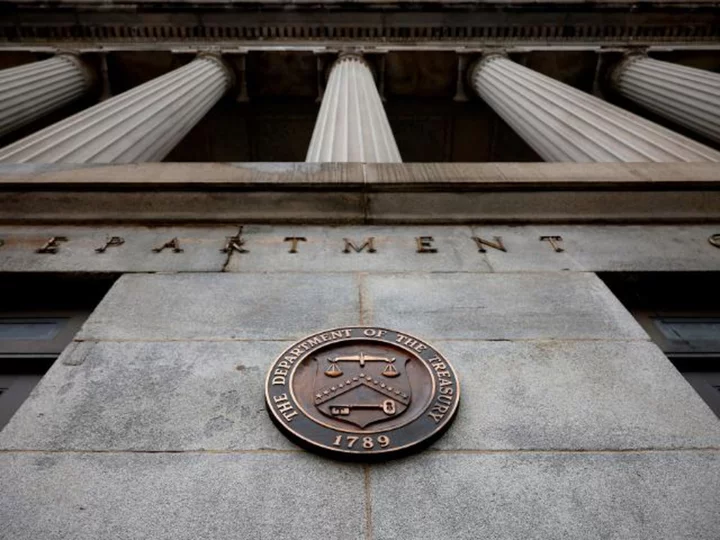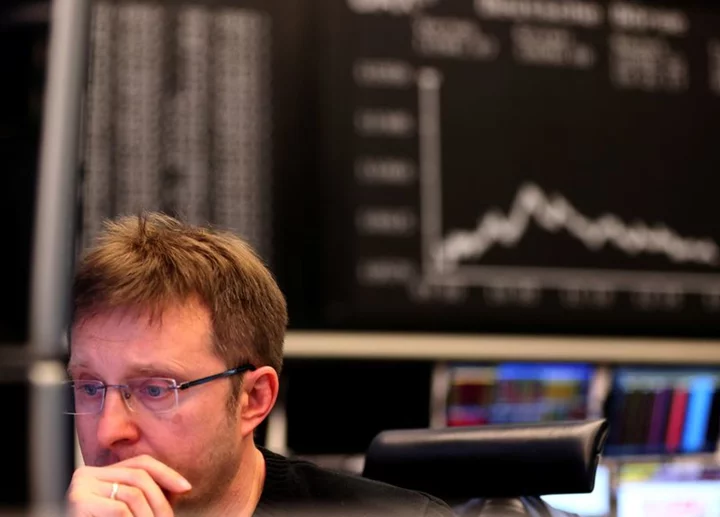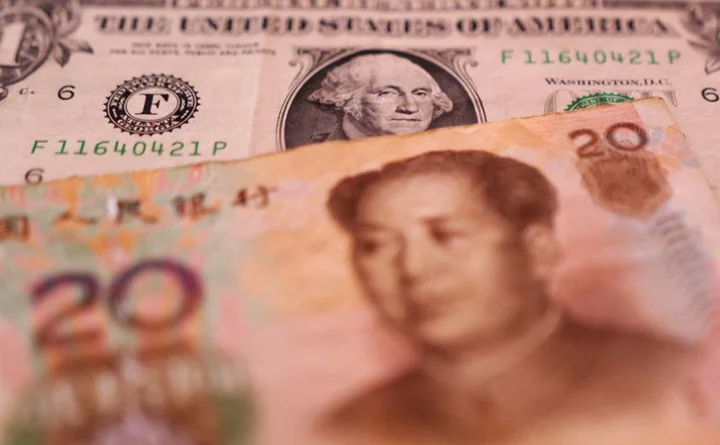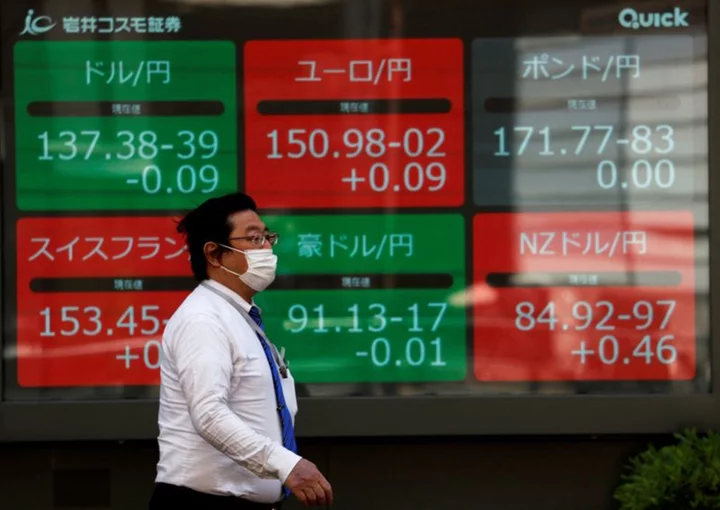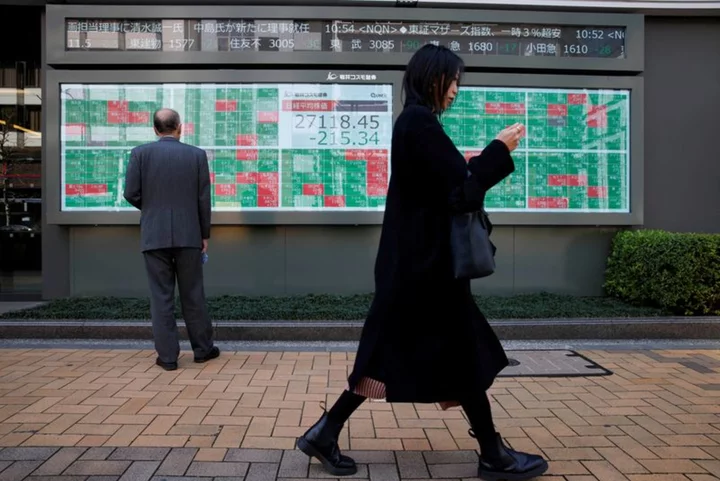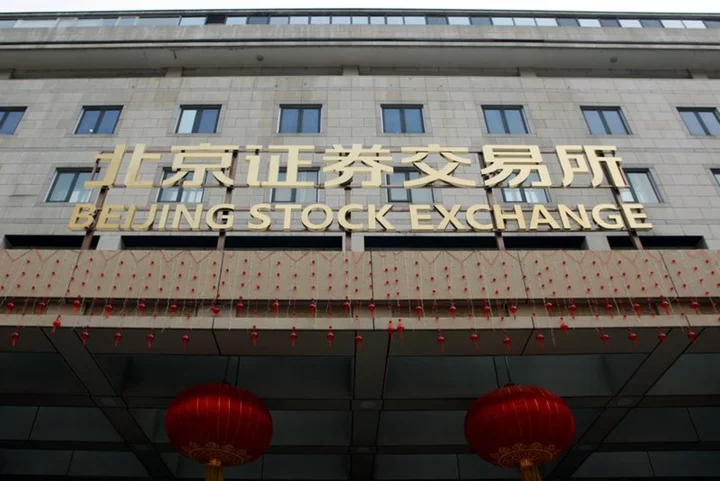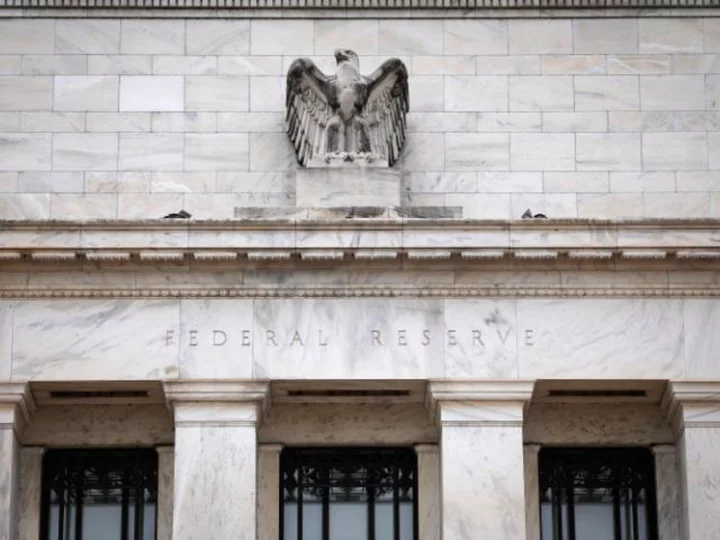For a while now the theme of "higher for longer" has dominated market speak -- that's the idea that the Federal Reserve will keep interest rates elevated for a prolonged period of time to bring interest rates down.
But a rise in long-term Treasury yields could be doing some of that work for the Fed and may put an end to the past 19 months of historic interest rate hikes meant to tamp down inflation.
It's no longer "higher for longer," said Steve Sosnick, chief strategist at Interactive Brokers, it's just "high for long."
What's happening: 10-year Treasury yields are flirting with 5% for the first time since 2007, before the global financial crisis. The 30-year fixed rate mortgage has been advancing towards 8% — a level not seen since the dot-com bubble popped in 2000.
Rates may fluctuate, but it's clear that we're in the middle of a paradigm shift, said Rob Almeida at MFS Investment Management. It's unlikely that rates will return to pre-pandemic lows, he said.
There are a few reasons that the 10-year has advanced so quickly since last year, when it sat around 4%: Strong economic growth and elevated inflation tend to push yields higher. The US Treasury has issued a lot of government debt in recent months, and with expensive wars in Ukraine and the Middle East looming, more could be coming soon. Those things bring down bond prices and push yields higher, attracting buyers.
Regardless of why it's happening, for American consumers, an elevated 10-year Treasury return means economic pain: more costly car loans, credit card rates and even student debt.
It also means more expensive mortgage rates. Mortgage rates tend to track the yield on 10-year US Treasuries. When Treasury yields go up, so do mortgage rates; when they go down, mortgage rates tend to follow.
But what's bad for the economy tends to be good for bringing prices down. Fed officials, including Powell, have indicated that rates could be high enough to help lower inflation towards their target goal of 2%. But they're leaving the door open for further hikes based on future economic data.
"Financial conditions have tightened significantly in recent months, and longer-term bond yields have been an important driving factor in this tightening," Fed Chair Jerome Powell said during a discussion at the Economic Club of New York on Thursday, adding that the Fed will "remain attentive to these developments."
Markets believe him, and investors seem to think Fed members will keep interest rates the same at the central bank's next two-day policy meeting, beginning on Halloween. Financial markets currently see a 99% chance the Fed will continue to pause rate increases, according to the CME FedWatch Tool. That's up from 93% on Wednesday.
The Paul McCartney portfolio rule: So what should investors do with this information?
In the very botched words of Paul McCartney: Let your portfolio be.
"If you think of an investment portfolio like a rock band, bonds would be the bass guitar," said Darrell Cronk, chief investment officer of wealth and investment management at Wells Fargo.
The bass can fade into the background, but it plays a critical function in keeping the band's rhythm and tempo.
During bull markets, bonds, or Treasuries, often go ignored, but provide a steady stream of income during more volatile times.
"It's rare that a bass player steps to the front of the stage, but that's exactly what US Treasury securities have done over recent months," said Cronk.
"Investors would be wise to listen to the rhythm and tempo of the data," he said. And right now the data is saying to respect the lag of tightening monetary policy and sit tight.
"The green and red lights may flash, and the wailing lead singers on your television screen may try to convince you that this time will be different, but from the back of the stage, the quiet bass guitarist provides the rhythmic repetition that grounds the music in fundamentals tested through time," said Cronk.
America's frozen housing market: Sales hit a 13-year low
Home sales dropped in September to the lowest level since the foreclosure crisis as surging interest rates and climbing home prices made buying a home unattainable for a growing share of would-be buyers, reports my colleague Anna Bahney.
Historically low inventory of homes for sale continued to push prices up and rates that crossed over 7% in August have pulled sales down to their lowest level in 13 years, according to a monthly report from the National Association of Realtors.
The median price for existing homes — which include single-family homes, townhomes, condominiums and co-ops — was $394,300 last month. That was up 2.8% from a year ago and marked the third consecutive month of year-over-year price increases, setting a record high price for homes in September. Prices rose in all four regions of the country, the Northeast, Midwest, South and the West, the NAR report found.
"For the third straight month, home prices are up from a year ago, confirming the pressing need for more housing supply," Lawrence Yun, NAR chief economist said.
As the high cost to buy a home remains a barrier for many people, analysts are wondering if this a temporary situation or, perhaps, a new era for homeownership.
Not only are high costs excluding people from the opportunity to build equity and wealth through homeownership, the composition of who remains in the market is changing.
In September just 27% of those buying homes were first time buyers, according to NAR, matching cyclical lows and down from last month and a year ago. A more historically typical share of first time buyers would be in the high 30% to low 40% range.
At the same time the share of all-cash buyers is now higher than first time buyers, which has historically not been the case. In September 29% of purchases were all cash, up from 27% in August and 22% in September 2022. A more typical share of all-cash purchases, historically, would be around 20%.
Snapchat isn't just for teens anymore. Now it needs to make some real money
When Snapchat announced last month that it had reached 5 million paying subscribers for its Snapchat+ service, it seemed like a stunning achievement, reports my colleague Clare Duffy. The milestone marked the halfway point to the 10 million subscriber number that CEO Evan Spiegel had just months earlier identified as a "medium-term" goal.
The service's success in just 15 months after launching proved that despite Snapchat's reputation as an app used mainly by teens, users are willing to cough up money for a premium experience on the platform. At 5 million subscribers paying $3.99 per month, Snapchat+ is set to earn around $239 million in annual revenue.
That subscriber number is just a fraction of its overall user base of Snapchat, which has quietly become one of the world's fastest-growing social platforms. As of the end of June, it reported 397 million daily active users — more than X, the platform formerly known as Twitter.

